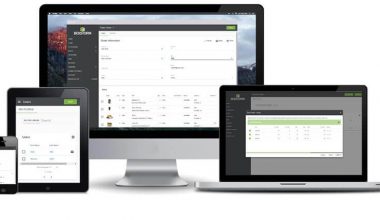In the commercial sector, there is a new practice. It’s known as “presenteeism,” and some employees, and possibly even business owners, believe it’s a brilliant concept.
Unfortunately, it can have long-term negative implications.
However, unlike absenteeism, presenteeism is difficult to quantify. After all, it’s easy to notice when someone isn’t working. But while they’re in the workplace (virtually or otherwise), it’s difficult to discern how much their personal circumstances are hurting their capacity to perform at their best. HR and managers may better understand the impact presenteeism has on organizations, what it looks like, and what to do about it by concentrating on results.
What is Workplace Presenteeism?
Have you ever been in a situation like this?
You have a migraine headache when you wake up. You’re tired and in pain, but migraines are nothing new to you – especially during allergy season. You stumble to your workstation, sniffling and bleary-eyed. You might not be feeling your best, but “something is better than nothing,” right?
Not so quickly.
What is Presenteeism?
Presenteeism is a workplace phenomenon in which showing up takes precedence over self-care. Employees are physically present but are unable to be productive or function well due to illness, personal difficulties, weariness, or burnout. Presenteeism is widely regarded as a problem of corporate culture.
You may believe that the ideal way is to “show up unless you can’t,” yet presenteeism can have serious consequences. According to HR Magazine, arriving to work sick or ill can:
- Start a workplace epidemic by getting one person sick after another.
- Increase the number of errors made by a sick individual on the job.
- Employees are more likely to suffer psychological injury as a result of this.
Employee presenteeism differs from employee disengagement or even employees that are highly driven but weary. These employees are ill physically or mentally, affecting their abilities, motivation, and decision-making. Personal situations, sickness, and other obstacles prevent individuals from doing their best work – or perhaps working at all.
What Elements Contribute to Presenteeism?
Presenteeism is primarily a product of workplace culture. After all, most of us understand that showing up unwell or weary prevents us from doing our best work. So why do we bother showing up?
Many businesses, unintentionally, encourage those who arrive early and depart late. In fact, it has been discovered that managers prefer in-office employees over remote employees. This proximity bias is causing a schism in hybrid organizations, perhaps encouraging bad conduct or driving good employees away.
When business culture makes employees feel like they’ll be punished if they take a day off, they often respond by turning up (even when they shouldn’t). Here are five workplace characteristics that contribute to presenteeism:
Presenteeism and its Causes
#1. Modeled Behavior
When managers and leaders are ill, what do they do? If your manager consistently arrives at work unwell or exhausted, team members will follow suit. This will eventually be perceived as a value and become part of the culture, making it more difficult for anyone to make a different choice.
When leaders and managers demonstrate that they are willing to take sick leave or mental health days when needed, others will follow suit.
#2. Inadequate sick leave or benefits
People will not take sick leave if your healthcare and paid time off programs do not include it. Furthermore, workers who do not have paid sick leave are more likely to require major medical attention and attend emergency rooms. Employers who implement paid sick leave, on the other hand, frequently report an increase in workplace productivity. Taking a day or two off at the outset of an illness generally shortens its duration (and keeps others from becoming ill).
#3. Lines are blurred for remote teams.
Even if you work from home, it’s a good idea to take a sick day. Many employees, however, claim that since shifting to remote work, “the bar to call out for the day has been raised.” However, the extra freedom that comes with working from home does not eliminate the possibility of making mistakes while checking in ill.
#4. Insecurity about one’s job
Employees were concerned that taking a sick day might put them on the chopping block early in the pandemic when unemployment was rampant. Despite the fact that job searchers (supposedly) have greater leverage during the Great Resignation, many remain concerned about keeping their jobs. Workers are more likely to go to work when they should be at home if a recession is imminent.
#5. Workload
One of the main reasons workers don’t feel comfortable calling out, whether remote or in-person, is the worry of having an email waiting for them when they return. When expectations are high and deadlines are tight, employees tend to push through rather than take time off. This gives birth to another tendency known as leavism, in which people spend their vacation time catching up on work.
What is the Difference Between Presenteeism and Absenteeism?
Absenteeism is the term used to characterize an employee’s unscheduled absence from work. This could be due to illness, a family emergency, a shortage of daycare, or apathy. Some absenteeism is to be expected in any workplace. People become sick and have crises, and most employers allow for a day or two off to deal with these difficulties.
An absent employee is not in their seat, whereas presenteeism refers to people that are present at work but are unproductive. These people are attempting to do their occupations but are unable to do it owing to health issues or other factors. The main issue with both absenteeism and presenteeism is lost productivity. However, the costs of presenteeism are anticipated to be significantly more than those of absenteeism.
Presenteeism and Its Effects
As previously stated, presenteeism is more difficult to quantify than absenteeism. Several research, however, has been done in an attempt to identify the prevalence of presenteeism, as well as its immediate and long-term consequences.
In one longitudinal study of nurses, researchers discovered that presenteeism “directly led to individual fatigue, tension, anxiety, and depersonalization.” The negative effects didn’t stop there, however, as the authors of this meta-analysis cite “serious physiological and psychological consequences” as a result of their continued presence at work.
Furthermore, some of the repercussions of presenteeism are as follows:
#1. Productivity has been lost.
It cannot be overstated: showing up to work when unwell is not “better than nothing.” In fact, long hours and weariness at work are already likely to lead to decreased productivity, which is exacerbated by illness. Employees who are sick or sleepy are considerably more likely to make mistakes. Mistakes and poor decision-making result in confusion, thrashing, and rework for others. These errors could be fatal in some situations, such as healthcare or construction.
Illness is being prolonged and spread.
Staying at home when sick is crucial if you work in an office. Germs spread quickly during work. Researchers at the University of Arizona discovered that a single ill employee might infect 50% of high-touch surfaces in just a few hours. Taking just a day or two off at the start of an illness can cut its duration in half – and save the lives of many others.
#2. Morale Impact
Being sick already has a negative influence on your mood, so going to work when you should be resting amplifies that effect. When you are depressed, it is difficult to engage productively with coworkers, take feedback, or be receptive to new ideas or approaches. In addition to the crankiness that comes with being sick, the discomfort of being sick may make it more difficult to enter a flow state. When you feel like you can’t “get into work” because your physical health is interfering, both your job and your work experience suffer.
Furthermore, working while sick sets a bad example for the rest of your coworkers. Employees in a presenteeism culture will (consciously or unconsciously) compare their symptoms to those of their coworkers. Who are they to stay home with a migraine if Jordan comes up with the flu? Employee morale may suffer as a result of the lack of “choice” in the subject.
#3. Undermines acceptance
A workplace is made up of a diverse range of people, each having its own set of obligations and concerns outside of the workplace. Employees who have children or other caregiving duties may be unwilling to utilize sick time for themselves, preferring to “save it” for when their loved ones require assistance. Employees with disabilities and mental health conditions may be concerned about the frequency of sick absences and try to “power through.” They may be concerned that the time they need to take away from work reflects negatively on them, so they show up even if they don’t “absolutely need” the time away.
How Can Presenteeism Be Reduced?
Workplace culture is essential to presenteeism. A nuanced blend of expectations, personality, and modeling culminates in an employee’s decision to come to work or not.
As a result, minimizing presenteeism is not a simple or clear solution. It entails fostering a workplace that prioritizes employee wellness and work-life balance. Even when things are stressful and deadlines must be reached, managers must ensure that they model the conduct they want their people to exhibit. That means remaining at home (and not signing on) while you’re sick.
Of course, when working in an office or dealing with physical health, presenteeism is considerably easier to solve. Mental health issues and hybrid workforces necessitate a higher level of attention and awareness to detect presenteeism.
Finally, increasing employee well-being requires a two-pronged strategy. First, leaders must make it “safe” to stay at home. Second, employers should take whatever steps they can to support employee health, reducing the likelihood that they will require a day off in the first place. Here are some tactics that leaders may want to consider applying in their workplaces:
#1. Examine your leave policies and make taking time off a habit.
Employees are considerably more likely to come to work sick if they had to pick between losing a day (or more) of pay or coming in sick. Provide paid sick time to your staff. Inform them about instances in which they may be eligible for a medical leave of absence or FMLA. Policies like this frequently pay for themselves through greater productivity.
#2. Schedule downtime for the entire firm.
Employees frequently worry that taking time off would result in a mound of expectations when they return. Professional FOMO can be reduced by adopting company-wide breaks.
Consider organizing an Inner Work Day, in which employees are given a day off to do something that will nurture their spirit. Alternatively, you may close the office for a “summer break.” If you want to start small, try designating certain days or hours as “meeting-free” so everyone has focused, clear time on their calendars.
#3. Inform employees of the disadvantages of presenteeism.
The evidence against presenteeism is powerful, but so is the desire to show up to work sick. Companies may need to remind employees frequently that they are not expected to report ill to drive the point home. Encourage them to take time off, discuss studies on the advantages of rest, and remember to model this behavior if they become ill.
#4. Start a workplace wellness program.
According to the adage, “An ounce of prevention is worth a pound of cure.” Stress and weariness can cause or exacerbate a variety of health problems. Making well-being a daily priority can help you reduce the number of days your employees need to take off.
Create an employee wellness program that provides access to mental and physical health support. Ask employees what they require for a more productive workplace. Consider investments such as a stipend for working from home, a coworking membership, or a gym subscription.
#5. Accept flexible working hours.
Working remotely does not exclude you from taking a day off. However, the ability to forgo the commute, work from home, or adjust your hours can improve both productivity and well-being.
While you should still encourage your employees to take sick days when necessary, give them the option of where and when they complete their work if possible. A fatigued employee, for example, would appreciate being able to start to work a few hours later one day in exchange for extra sleep.
#6. Discover the symptoms of presenteeism.
As a leader, you must learn to recognize when employees are “powering through” health or personal issues in order to show up at work. These may be difficult to detect – for you or your team. Examples of presenteeism include:
- Using relatively little sick time or PTO, particularly if it is unlimited or does not roll over
- Working in an unusually quiet or introverted manner
- In all virtual meetings, the camera is turned off.
- An unexpected surge in errors or missed deadlines
- Refusing to participate in social activities or interactions at work
- Increased doctor’s appointments without a corresponding increase in sick time
- Looking exhausted or distracted
- Arriving or logging in late frequently
#7. Request feedback
Last but not least, inquire about your employees’ well-being. Quarterly, send out an anonymous questionnaire asking how they’re feeling. Examine their workloads, relationships with their bosses, and whether they believe they can take time off when needed. Ideally, these anonymous responses should provide you with an understanding of your team’s general well-being. You can go over these responses with your human resources department to see which efforts are successful and what further support your team requires.
Last thoughts
Presenteeism does not necessarily indicate that your staff is disengaged at work. Rather, they are doing their best to meet the requirements of their position. However, they should not feel compelled to sacrifice their well-being in order to do so.
No leader wants their people to be burned out, sick, or weary – yet the elements that contribute to this in the workplace can be subtle. Learning to recognize these indicators can assist managers and leaders in creating a work environment that operates at peak efficiency all of the time.
- SICK PAY CALIFORNIA: Complying With California’s Paid Sick Leave Law
- OREGON SICK LEAVE LAW: Everything You Need to Know
- HOW TO CALL OUT OF WORK: Requesting for Leave of Absence
- Employee Contract: Examples, Guide & Template






